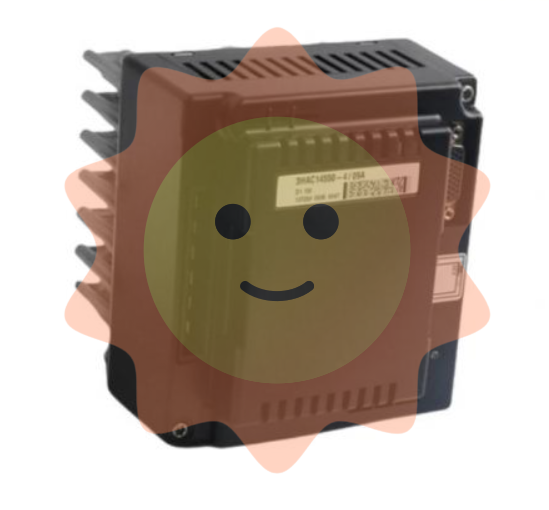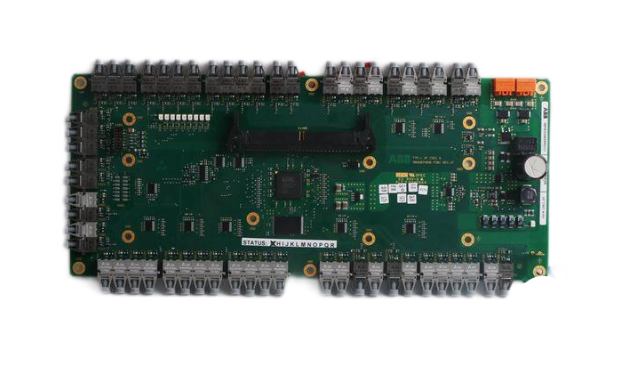High-efficiency low-cost retail giants embrace robots
A decade ago, US e-commerce giant Amazon began using robots in its vast distribution warehouses in fulfillment centers, or organizations that track production in the warehouses where users place orders. In these robot-enabled warehouses, Amazon employees no longer have to shuttle between rows of shelves; robots deliver goods directly to pickers. The advantage of this is that it not only saves a lot of labor, but also improves the efficiency of picking goods, killing two birds with one stone. Today, Amazon has deployed more than 350,000 of its various robots worldwide. Even then, it is not entirely certain that Amazon's huge demand for robots will be met.
The British "Economist" magazine believes that thanks to the continuous progress of storage robot technology, coupled with the impact of increasing labor costs and recruitment difficulties, the logistics industry has begun to change. In particular, in the past two years, the global supply chain has been in a tense state due to the prevention and control of the new coronavirus pneumonia epidemic, and the business volume of consumers who are closed at home should continue to increase, so the fulfillment centers of major e-commerce companies will always operate at full capacity, and the demand for robots will also rise.
picture
The continuous growth of market demand has led to the continuous iteration of technology. Today, a new generation of robots with more functions and better services for the logistics industry continues to emerge. (Photo courtesy of CNSPHOTO)
Warehouse automation is no longer the icing on the cake
However, despite the heavy use of robots, many companies still need to hire temporary workers during the peak season to cope with the increased volume of business. In the run-up to the holiday shopping season in December, Amazon hired about 150,000 additional workers in the US alone and paid them well - seasonal temporary workers could earn an average starting wage of $18 an hour and a signing bonus of $3,000, with some locations offering temporary workers an additional $3 an hour depending on the shift.
If you stretch out the timeline, almost all of Amazon's recruitment slots are calculated in units of 10,000. In March 2020, Amazon announced the hiring of 100,000 workers, 75,000 in April, and 100,000 in September. Throughout 2020, Amazon hired more than half a million employees. These hires are mainly responsible for Amazon's warehouse and delivery operations.
A new study by McKinsey, the US management consultancy, argues that the long-term impact of a high reliance on increasingly scarce Labour on logistics distribution is clear: "Warehouse automation is no longer just a cherry on top, but a necessity for sustainability". This means that the logistics industry will need more robots, including replacing those already in use with newer, more efficient robots, and replacing most of the jobs still done by humans with advanced robots. As a result, McKinsey predicts that the warehouse automation market will expand at a compound annual growth rate of 23%, and the size of the warehouse automation market will exceed $50 billion by 2030.
The continuous growth of market demand has led to the continuous iteration of technology. Today, a new generation of robots with more functions and better services for the logistics industry continues to emerge. According to the British "Economist" magazine, the "600 series" robot developed by the UK's largest online grocery retailer Ocado is one of the representatives. The robot "changes everything," said Ocado CEO Tim Steiner.

The 600-Series robots are much lighter, more flexible and require less battery power than Ocado's current 500-series robots. Ocado's robots work in a large networked metal cabinet in the fulfillment center. Some centres are bigger than football fields. Each cell of the metal cabinet contains plastic crates containing goods, which can be stacked up to 21 stories high. After receiving an order, the robot is sent to extract a crate and deliver it to a sorting station. There, an employee takes out the required items, scans them one by one and puts them into the appropriate bag. It's similar to operating at a supermarket checkout counter.
Before robots were used for sorting, if it was a large order, it could take about an hour to pick goods around the warehouse by hand. But now, with multiple robots working in metal cabinets at the same time, picking is much faster.
Ocado's new "600 Series" robots will be equal to or better than the "500 series" in performance, but use less energy. The "600 Series" also has the benefit of making the fulfillment center smaller. This means that fulfillment centers can be installed in a matter of weeks, rather than months or longer, and their installation costs are lower.
Several retail giants are starting to use robots
The British magazine The Economist revealed that Amazon is also developing more efficient robots. Its earliest robot, called Kiva, was a flat robot that could slide under a shelf more than a man high where goods were stored, then lift the shelf and deliver it to a sorting station. In 2012, Amazon acquired Kiva Systems, a U.S. warehouse robot company, for $775 million, then renamed it Amazon Robotics.
Since then, Amazon Robotics has developed a series of robots, including Kiva's scaled-down version of Pegasus, which allows Amazon to store more items at fulfillment centers and make widespread use of robots at smaller urban fulfillment stations. To prepare for a more highly automated future, the company recently opened a new robot manufacturing facility in Massachusetts to boost production.
In 2014, when it became clear that Kiva robots would be manufactured exclusively for Amazon, two engineers from a medical company decided to form a company called Exotec to start building a different kind of robotic warehouse. The French company has developed a three-dimensional system using a robot called Skypod. Skypod looks a bit like Kiva and can also move freely in the warehouse. But instead of moving shelves, the Skypod is able to climb onto them. When it reaches the desired height, it removes a crate, then climbs down the shelf with it and delivers it to the sorting station. The Skypod maximizes the use of warehouse space, as it can climb up shelves 12 meters high. Because the system is modular in design, it can be easily extended. Skypod can not only return crates to shelves, but also move them to places where they need to be reloaded.
Skypod is already being used by some retailers, including French hypermarket group Carrefour, US clothing company Gap and Japanese clothing brand Uniqlo.
More robots will enter the field of production and life
Of course, because robots move so fast (Skypod's speed is 4 meters per second) that they can hurt people, they are often designated to operate in enclosed areas. Today, if Amazon employees need to enter the robot work area, they wear special safety vests. The safety vest is equipped with an electronic device that signals to nearby robots that there are people in the area. After receiving the signal, the robot will stop working or change to another route.

In addition, for robots to work with people, they must be equipped with additional safety systems such as cameras, radar and other sensors to avoid colliding with people. As a result, they tend to act cautiously and slowly, which will cause the robot to stop frequently and work slowly. Now, robots that are more powerful and more aware of their surroundings are on the way. NEC, for example, has begun to adopt "risk-sensitive stochastic control technology," which is similar to procedures used in the financial sector to avoid risky investments. In warehousing scenarios, it allows robots to weigh risks before starting work, such as choosing the safest and fastest route through the warehouse. NEC said that during testing, the technology doubled the robot's average picking speed without compromising safety.
The British "Economist" magazine said in a related report that the most difficult work to automate in the fulfillment center is sorting and packaging, so it needs to increase manpower in the peak season. And it is not easy to use robots to complete these tasks, because the fulfillment center stores countless types of goods, different shapes, sizes and weights. Still, Amazon, Ocado, and numerous companies have begun to automate sorting by installing robotic arms at some sorting stations. These robotic arms typically identify items by using cameras and reading bar codes. Artificial intelligence techniques are used to teach robots how to handle certain goods, such as not putting potatoes on top of eggs.
Ocado is also developing a robotic arm that bypasses the sorting station and takes goods directly from crates in the fulfillment center. Fetch Robotics, a Silicon Valley-based logistics robot maker that developed a robotic arm that can move around a fulfillment centre at will, was acquired last year by Zebra Technologies, a US automatic signage company.
Another robot manufacturer, Boston Dynamics, based in Massachusetts, has introduced a heavy-duty mobile robot called Stretch that helps drivers unload and place boxes in place. In January, US logistics giant DHL placed its first order for Stretch, which will use the robot in its North American warehouses over the next three years.
It is foreseeable that in the future, there will be many different types of robots entering different areas of production and life, but at the same time, there will be many different types of work for humans.
- EMERSON
- Honeywell
- CTI
- Rolls-Royce
- General Electric
- Woodward
- Yaskawa
- xYCOM
- Motorola
- Siemens
- Rockwell
- ABB
- B&R
- HIMA
- Construction site
- electricity
- Automobile market
- PLC
- DCS
- Motor drivers
- VSD
- Implications
- cement
- CO2
- CEM
- methane
- Artificial intelligence
- Titanic
- Solar energy
- Hydrogen fuel cell
- Hydrogen and fuel cells
- Hydrogen and oxygen fuel cells
- tyre
- Chemical fiber
- dynamo
- corpuscle
- Pulp and paper
- printing
- fossil
- FANUC
- Food and beverage
- Life science
- Sewage treatment
- Personal care
- electricity
- boats
- infrastructure
- Automobile industry
- metallurgy
- Nuclear power generation
- Geothermal power generation
- Water and wastewater
- Infrastructure construction
- Mine hazard
- steel
- papermaking
- Natural gas industry
- Infrastructure construction
- Power and energy
- Rubber and plastic
- Renewable energy
- pharmacy
- mining
- Plastic industry
- Schneider
- Kongsberg
- NI
- Wind energy
- International petroleum
- International new energy network
- gas
- WATLOW
- ProSoft
- SEW
- wind
- ADVANCED
- Reliance
- YOKOGAWA
- TRICONEX
- FOXBORO
- METSO
- MAN
- Advantest
- ADVANCED
- ALSTOM
- Control Wave
- AB
- AMAT
- STUDER
- KONGSBERG
- MOTOROLA
- DANAHER MOTION
- Bently
- Galil
- EATON
- MOLEX
- Triconex
- DEIF
- B&W
- ZYGO
- Aerotech
- DANFOSS
- KOLLMORGEN
- Beijer
- Endress+Hauser
- MOOG
- KB
- Moxa
- Rexroth


Email:wang@kongjiangauto.com




















































































































